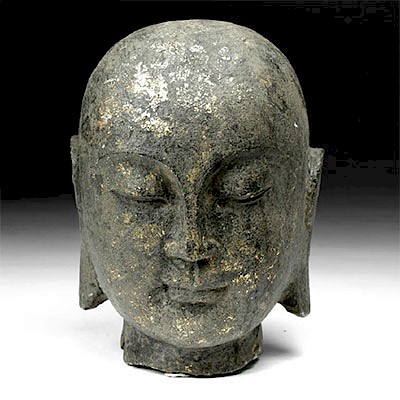Rare Quimbaya 14K Gold Poporo Vessel - 4 g
Lot 176
About Seller
Artemis Fine Arts
686 S Taylor Ave, Ste 106
Louisville, CO 80027
United States
Selling antiquities, ancient and ethnographic art online since 1993, Artemis Gallery specializes in Classical Antiquities (Egyptian, Greek, Roman, Near Eastern), Asian, Pre-Columbian, African / Tribal / Oceanographic art. Our extensive inventory includes pottery, stone, metal, wood, glass and textil...Read more
Estimate:
$2,000 - $3,000
Absentee vs Live bid
Two ways to bid:
- Leave a max absentee bid and the platform will bid on your behalf up to your maximum bid during the live auction.
- Bid live during the auction and your bids will be submitted real-time to the auctioneer.
Bid Increments
| Price | Bid Increment |
|---|---|
| $0 | $25 |
| $300 | $50 |
| $1,000 | $100 |
| $2,000 | $250 |
| $5,000 | $500 |
| $10,000 | $1,000 |
| $20,000 | $2,500 |
| $50,000 | $5,000 |
| $100,000 | $10,000 |
| $200,000 | $20,000 |
About Auction
By Artemis Fine Arts
Nov 29, 2018
Set Reminder
2018-11-29 10:00:00
2018-11-29 10:00:00
America/New_York
Bidsquare
Bidsquare : Holiday Glitz - Ancient / Ethnographic Art
https://www.bidsquare.com/auctions/artemis-gallery/holiday-glitz---ancient-ethnographic-art-3672
What to give this holiday season? Think silver, gold, bronze, shiny, glittery, wearable, festive. We ship worldwide and handle all shipping in-house for your convenience. This is one sale you don't want to miss! Artemis Fine Arts info@artemisfinearts.com
What to give this holiday season? Think silver, gold, bronze, shiny, glittery, wearable, festive. We ship worldwide and handle all shipping in-house for your convenience. This is one sale you don't want to miss! Artemis Fine Arts info@artemisfinearts.com
- Lot Description
Pre-Columbian, Colombia, Quimbaya, ca. 5th to 10th century CE. A 14 karat gold poporo (lime container) cast in the form of a miniature vessel or flask with a slightly flattened ovoid body and a flared neck. The entire surface is extensively decorated - the body featuring four abstract zoomorphic (fish and/or bird) forms, the neck with a running wave - all finely delineated. A small suspension loop is attached to the circular lid. This is an exceptional example, replete with sophisticated technique, extensive decoration, and ceremonial intent. Quite a rare form! Size: 1.375" H (3.5 cm); weight: 4 grams
Various indigenous cultures of Pre-Columbian South America used poporos to store small amounts of lime made from calcined seashells that were used to enjoy the effects of coca leaves. A poporo traditionally consists of two pieces: the receptacle and the lid which includes a pin that is used to carry the lime to the mouth while chewing coca leaves. Since the chewing of coca has traditionally been considered sacred for the indigenous people, poporos have also been attributed with mystical powers and social status. The Quimbaya civilization is noted for spectacular gold work characterized by technical accuracy and detailed designs. Most of the retrieved items are part of funeral offerings, found in the inside of sarcophagi made of hollow trunks. The gold used to create poporos like this example represented a sacred metal ideal for an elite's passage to the afterlife.
Provenance: private Southern California, USA collection, acquired in the 1970s to mid-1980s
All items legal to buy/sell under U.S. Statute covering cultural patrimony Code 2600, CHAPTER 14, and are guaranteed to be as described or your money back.
A Certificate of Authenticity will accompany all winning bids.
We ship worldwide and handle all shipping in-house for your convenience.
#140739Expected age wear with normal scuffs. Recessed eyes may have once held inlays. The gold presents with a lovely warm patina.Condition
- Shipping Info
-
All shipping is handled in-house for your convenience. Your invoice from Artemis Gallery will include shipping calculation instructions. If in doubt, please inquire BEFORE bidding for estimated shipping costs for individual items.
-
- Buyer's Premium



 EUR
EUR CAD
CAD AUD
AUD GBP
GBP MXN
MXN HKD
HKD CNY
CNY MYR
MYR SEK
SEK SGD
SGD CHF
CHF THB
THB













